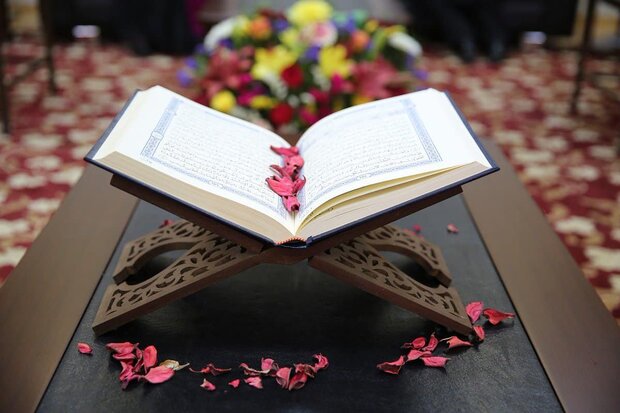The history of Islam showed that the Imam had an effective role in the incidents after the Karbala uprising.
Since Imam Sajjad was so ill at the time of the Karbala incident, he was unable to participate in the Jihad with his father.
During his 34-year Imamate in addition to conveying the message of Ashura, Imam Sajjad (AS) attempted to keep alive this great event in people’s minds so that this great epic would inspire the next generations and nations in fighting oppression and injustice.
Imam worked much to express the principles and teachings of Islam. With his successive Haj pilgrimages, Imam Sajjad expressed the deep and interesting facts of Islam for Muslims in the farthest parts of the Islamic world.
The words of Imam Sajjad obliged the people to make a deeper study and investigation to assess the importance and value of this rising in the history of Islam and to find out what these persons were saying and what weight their words carried and why they were not calm and quiet like other people and why they were not willing to accept any offer made by the ruler in power.

A collection of the Imam’s precious prayers and supplications named Sahifa Al-Sajjadiya have been left behind which includes ethical, social, and cultural issues.
The title Sahifa Al-Sajjadiya means simply `The Book of al-Sajjad'.
Al-Sajjad is one of the titles given to Zayn al-'Abidin and signifies `the one who constantly prostrates himself in prayer. The book is often called Sahifa Al-Sajjadiya, that is, `The "Perfect", or "Complete", Book of al-Sajjad.
A seminal work in early Islamic spirituality, the book is considered to be the oldest prayer manual in Islamic sources.
Shia tradition regards the book with great respect, ranking it behind the Quran and Imam Ali's Nahj al-Balagha.
Fifty-four supplications form the main body of Al-Sahifa, which often also includes an addendum of fourteen supplications and fifteen munajats (whispered prayers). Al-Sahifa is often regarded as authentic by specialists in the science of hadith.
Leader’s book on cultural, political life of Imam Sajjad (AS)
Leader of the Islamic Revolution Ayatollah Seyyed Ali Khamenei’s book on the cultural and political life of Imam Sajjad (AS), the fourth Imam of the Shia, was published in 2021.
The book is composed of four chapters, which cover a series of speeches the leader delivered about the cultural and political life of Imam Sajjad (AS) at the Keramat Mosque in Mashhad in 1973.
An extensive interview conducted by the Pasdare Eslam Magazine with Ayatollah Khamenei about the life of Imam Sajjad (AS) in 1982 has also been reviewed in “Epic of Imam Sajjad (AS)”.
Who Imam Sajjad (AS) is
Imam Sajjad (AS) was born in Medina in 38 AH and he was about 23 years old during the Karbala tragedy. In some history books, his date of birth is shown as 15th Jumada Awwal 38 AH. His mother was Shahr Banu the daughter of Yazdjurd II, the last of the Persian Kings before Islam. She was taken prisoner when Muslim armies conquered Persia. When she was brought in Madina Imam Ali (AS) spoke to her and she embraced Islam and was married to his 2nd son Imam Hussain (AS).
People knew they were the grandsons of the Holy Prophet and followed them by their hearts but outwardly because of the fear of the Ummayad ruler in Damascus, there was very little following of the Ahlulbayt of the Prophet.
In 60 Hijri when his father Imam Hussain (AS) had to leave Madina for Makka and then for Karbala, he was with him all the time.
He became the 4th Imam on the 10th of Muharram 61 Hijri. He was taken captive and brought to Kufa and then to Damascus in chains. In spite of his illness and humiliating position in front of Yazid the Ummayad ruler, when Yazid addressed him in an insulting manner saying that his father wasted his life by refusing to give the oath of allegiance to Yazid, Imam replied, that it was to save Islam.
In the month of Muharram, in the year 61 Hijri, Imam Sajjad (As) was present at the revolt of Karbala and the martyrdom of Imam Hussein (AS) and his companions which followed.
After the tragedy of Karbala, in which the Imamate was transferred to him, the Imam (AS) and the rest of the captives were first taken to Kūfah and then to Syria.
During this journey, he was the guardian and support of the rest of the group during the hard times and difficulties that they constantly encountered.
During this journey, Imam Sajjad (AS) disgraced the government of Yazid through his fiery and emotion-evoking sermons. After leaving Syria, he took up Medina as his place of residence. This continued until he was martyred in the year 94 or 95 Hijri.
He was laid to rest in the graveyard of Baqi’, next to the grave of his uncle Imam Hassan (AS).
Reported by Amin Mohammadzadegan Khoyi
